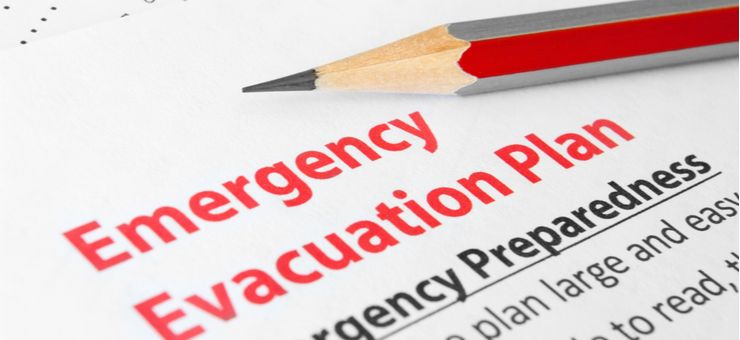
Evacuation Checklist And Procedures For Emergencies At Work

Emergency preparedness is an essential part of workplace safety. Having a solid emergency evacuation plan in place is a good way to ensure calm, order, and the best possible outcomes faced with an emergency. While we hope that we will never be faced with a serious workplace emergency, we never know when an emergency might arise. That’s why having an emergency evacuation checklist is so important. Emergencies within the workplace may require you to exit the building or area in order to stay safe or to remove hurt individuals from the area. Emergency evacuations are not as simple as just walking out of the building like you would do every day. Examples of emergencies which might require evacuation are:
- Fires
- Floods
- Hurricanes
- Tornadoes
- Toxic gas releases
- Chemical spills
- Radiological accidents
- Explosions
- Civil disturbances
- Workplace violence incidents
Establishing your Emergency Evacuation Checklist

There are some things that you should remember when you have to leave the workplace in the event of an emergency. One of the best ways to ensure that emergency evacuation procedures are done safely and efficiently is to have an emergency evacuation checklist. An emergency evacuation checklist ensures that you and your employees know exactly what to do in the event of an emergency evacuation. Having a plan is one thing, however in high-stress situations we can forget essential elements of the plan. Having an emergency evacuation checklist ensures that no step is missed, and reduces the likelihood of missing an important step during an evacuation. Some steps which we recommend be included on your emergency evacuation checklist are:
- Alert all present to the emergency
- Call the authorities, when applicable
- Offer help to clients and co-workers who may require it.
- Close (but don’t lock) the doors behind you.
- Stick to the predetermined escape route.
- Go straight to the predetermined assembly area or to the alternative assembly area if for one reason or another, the first one isn’t available or safe.
- Ensure each person is accounted for.
- Abstain from re-entering the building.
- Report people who are missing or unaccounted for.
- Alerting external agencies as necessary
- Alerting outside population of potential risk, as necessary
Other Things to Consider For Emergency Situations

Each emergency evacuation procedure will be different, depending on the:
- Nature of the emergency
- Degree of the emergency
- Size of the organization
- Capabilities of the organization in an emergency situation
- Physical layout of the place of work
- Immediacy of outside aid
Emergency procedures are also necessary in anticipation of other emergency situations (including handling of toxins) at work. They are:
- Procedures for escape and escape route assignments.
- Procedures for employees who perform or shut down critical plant operations.
- System for accounting for employees after they have been evacuated.
- Rescue and medical duties for the respective employees who are assigned to such.
- A means and method of reporting fires, as well as other emergencies.
- Contacts for details on the emergency plan.
Nobody expects an emergency or disaster to happen, especially one that affects them, their workplace, employees, or business. You and your employees can be forced to evacuate your place of business when you least expect it. Having the right emergency preparation and evacuation plan can help dramatically improve the outcomes. At Advanced Consulting and Training, we are committed to providing the highest quality safety training and consulting in Ontario. We will help you develop the right emergency evacuation plan for your business, taking into consideration all the facts. Contact us today!




